BY MIKE METTLER — MARCH 28, 2016
“We were united for the best sound we could get, and that was it. That was what we were chasing.” Is Linda Ronstadt revealing her high-end hopes for Hasten Down the Wind? Actually, that’s her assessment of the main goal she had for the 15 songs that comprise her recent compilation CD, Duets (Rhino). The ace song interpreter simply soars on songs like the tender but tough “I Never Will Marry” with Dolly Parton, the special intuitive blend she gets with James Taylor on “I Think It’s Gonna Work Out Fine,” and the complementary vocal halo she sets for Frank Sinatra on “Moonlight in Vermont.”
Ronstadt has since retired from singing (in 2013, she revealed she has Parkinson’s disease), but that hasn’t stopped her from appreciating the sound of a good mix or a stellar vocal — or gently trilling a few lines of her favorite songs while we talk. Here, Ronstadt, 69, and I discuss her hi-fi proclivities, how the right vocal texture tells the right tale every time, coming to terms with not being able to sing, and working her vocal magic with collaborators like Sinatra, Neil Young, and Paul Simon.
Mike Mettler: Superior recording quality is evident across the board on Duets. John Boylan, your mixer/engineer, did a great job with level-matching recordings done some decades apart.
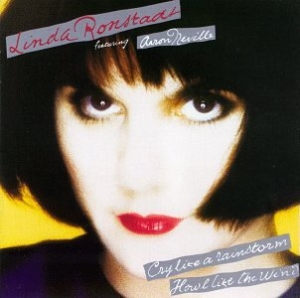 Linda Ronstadt: That makes me seriously happy to hear, because a lot of what I recorded was intended for the audiophile, especially Cry Like A Rainstorm, Howl Like the Wind (1989). Cry Like a Rainstorm really was a hi-fi record. We went for a big, tall sound on purpose. We recorded it on a large scoring stage at Skywalker Sound [at Skywalker Ranch in Marin County, California]. You can hear the room on it, all over the place. The room just roared.
Linda Ronstadt: That makes me seriously happy to hear, because a lot of what I recorded was intended for the audiophile, especially Cry Like A Rainstorm, Howl Like the Wind (1989). Cry Like a Rainstorm really was a hi-fi record. We went for a big, tall sound on purpose. We recorded it on a large scoring stage at Skywalker Sound [at Skywalker Ranch in Marin County, California]. You can hear the room on it, all over the place. The room just roared.
Mettler: What a nice way to describe it. You used vocal echo to great effect on many of these songs, but you backed off from using it as much in later years.
Ronstadt: After Cry Like a Rainstorm, I was driven to get in a good-sounding room and not have so much of that chamber echo on some of the later records I made, like Hummin’ to Myself (2004) and Adieu False Heart (2006). We dried up the echo and used as much natural room ambience as we could. I really liked that the best, because I hardly had any voice by then. I was working with a limited palette, so I had to limit myself. I’m only working with four colors, and now I’m down to three colors. What can you do with them? You better make them good. (chuckles)
People make different choices as to how much they load up on echo, just like you make choices when you load up your paint on a brush and decide how hard to push on the bristles, how many different colors to mix, and whether to make a wide swipe or a skinny line. There are a myriad of choices, and you mostly do it on a non-conscious level.
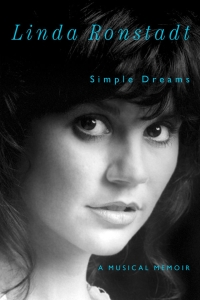 Mettler: One of the most important passages in your 2013 autobiography, Simple Dreams, was where you talked about having a “passion for true high fidelity sound” [page 185]. How important is the sound quality of the Duets recordings to you?
Mettler: One of the most important passages in your 2013 autobiography, Simple Dreams, was where you talked about having a “passion for true high fidelity sound” [page 185]. How important is the sound quality of the Duets recordings to you?
Ronstadt: Oh, it’s essential. The thing is, the recording process itself is the other artist in the room. The board is an instrument, and the mixer is an artist. It’s essential to have what the artists originally intended to have on the recording, because that’s how they’re trying to tell a story. For my voice, there’s a certain frequency range that carries the story. That range has the vocal detail, the little grind at the top of your voice with the shifting textures and colors. And when you can’t hear that, you lose the story.
Mettler: Whom do you consider to be among the best sound mixers you’ve worked with over the years?
Ronstadt: Good sound mixers are more born than made, I think. Well, they’re both, but good sound mixers are rare. They’re worth their weight in gold. I think George Massenburg is terrific, very original. And I also like the guy who’s done a lot of mixing for Neil Young, Niko Bolas. I love his mixes. And I love Gary Paczosa, who engineered and mixed Adieu False Heart. He’s a really talented mixer. He’s done a lot of Alison Krauss records too, and he gets a very beautiful sound with her voice.
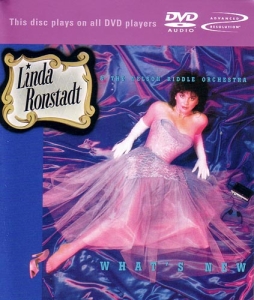 Mettler: Speaking of George Massenburg, he did the surround mix for What’s New when that came out on the DVD-Audio format back in 2002. Did you have any input on that mix?
Mettler: Speaking of George Massenburg, he did the surround mix for What’s New when that came out on the DVD-Audio format back in 2002. Did you have any input on that mix?
Ronstadt: No. He mixed that, but I heard it and I thought he did a really great job. He played that mix for me when I was in the studio. I was in San Francisco when he was doing that mix in Nashville. But when I went there to do some recording, I went in and listened to it. Nobody has ever touched any mix without me being there.
Mettler: One of the things I particularly liked reading in your book right out of the gate was when you talked about trying to get the “Boeing B-29 Sound” in your string arrangements [page 5]. Can you tell me a little bit more about that?
Ronstadt: Oh yeah! When B-29s take off and land, they’re in the interval of a fourth, and when they get up in the air, they’re in the interval of a fifth. I didn’t know that when I was a kid, but I knew I liked the fifths, the hollow fifths. Not the third there, just the fifths. And I can write very simple string arrangements — not very well, but I know what I want. Whenever I’d work with a strings writer, I’d always sing stuff, or do it myself and sing it for him and get him to write it all down. But often I would make those kinds of suggestions, and often they were those hollow fifths. I used to just write “thunder under,” and I’d say it was like the grind of a B-29, the grind between a cello and a double bass.
After [songwriter and longtime Ronstadt collaborator] JD Souther read my book, he went on YouTube to see a B-29 flying, and damned if it wasn’t the fourth taking off, and the fifth when it was in the air. When it would come over my house, it would just be on its way to land. And I heard one after another after another for years, coming home from the war, because the B-29s flew into Tuscon to the Davis-Monthan Air Field base.
[SoundBard aside: You can read JD’s take on which planes he thought those overhead sounds actually came from in my interview with him here.]
Mettler: So you literally heard it in your sleep. What albums would have examples of that arrangement idea?
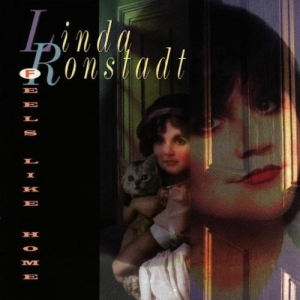 Ronstadt: Oh, it’s all over Cry Like a Rainstorm, I’m sure, and probably on Winter Light (1993) — all over there too. I don’t re-listen to my records once I’m done with them. Winter Light and Feels Like Home (1995) have a lot of that, because I did a lot of “string interfering” (laughs) on those records — the poor arranger! It was string interfering, not string arranging, because I’m not so musically literate. (both laugh)
Ronstadt: Oh, it’s all over Cry Like a Rainstorm, I’m sure, and probably on Winter Light (1993) — all over there too. I don’t re-listen to my records once I’m done with them. Winter Light and Feels Like Home (1995) have a lot of that, because I did a lot of “string interfering” (laughs) on those records — the poor arranger! It was string interfering, not string arranging, because I’m not so musically literate. (both laugh)
Mettler: What were some of your favorite records to listen to when you were growing up?
Ronstadt: In the ’50s and ’60s, I enjoyed listening to golden-era Mexican mariachi records, Frank Sinatra records, and a lot of the great jazz records on high fidelity speakers — records by Louis Armstrong, Ella Fitzgerald, and Billie Holiday. Peggy Lee made a great record called Beauty and the Beat! (1959, with the George Shearing Quintet) that was great in hi-fi. They were monaural, and they sounded fabulous. Recording with tube mikes — it was a whole different way or approaching it. It was way more organic-sounding.
But I loved it when I got my first stereo set. It was with the little speakers you’d pull out on the side and the demonstration model with the train going by — I thought, “Wow, this is totally cool!” I went and got a few Miles Davis records and put them right on: Kind of Blue (1959), and Someday My Prince Will Come (1961). Those were the first two stereo records I ever bought. And I’ll never forget the first time I heard Kind of Blue. Man, that was something — the sounds he made. I went, “Oh my God, this man has something to say.” I was only 14 or 15, I think. I was blown away.
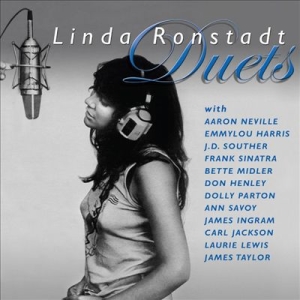 Mettler: Let’s talk some more about Duets. You’ve said you sometimes prefer singing with groups than by yourself.
Mettler: Let’s talk some more about Duets. You’ve said you sometimes prefer singing with groups than by yourself.
Ronstadt: Oh yes, I love to sing duets especially.
Mettler: Did you made all of the selections yourself for this collection?
Ronstadt: I selected them. I looked at them with an eye toward, “These are the hits, and I have to include them.” That’s not to say I don’t like those hits, it’s just to say that there are some things I would have loved to have had on. For instance, I used “I Can’t Help It (If I’m Still in Love With You)” with Emmylou Harris instead of some of the other ones I did with her because it was such a big hit [it reached #2 on the U.S. Country singles chart in 1974], rather than some other ones that were so good. I wish they had been on there, especially some of the other Emmy ones. There wasn’t anything in Spanish on there, and that really vexed me.
It was hard. The sequencing was so difficult, and I really struggled with it because there’s such a wide range of material. (laughs) What I did with the sequence was to start with the most traditional first, and the stuff that was the most basically arranged, leading all the way up to Frank Sinatra with the orchestra [on the final track, “Moonlight in Vermont”].
Mettler: I was wondering about those sequencing choices, considering you were dealing with recordings made in different eras. You and John Boylan [who complied and mastered Duets] must have had to make certain level-matching choices while you were putting it together.
Ronstadt: Oh, that was just craziness, you know, because they were all so differently recorded, and the tracks all sound different from each other. But most everybody’s going to listen to them as MP3s, so I wondered if I should have bothered, anyway. (laughs)
Mettler: No, no, I —
Ronstadt: Oh no, we’re not going to say MP3s sound like shit? They sound like shit. (laughs)
Mettler: Well, we can absolutely say that.
Ronstadt: Oh good; OK.
Mettler: What I was going to say is that we prefer to listen to your music in the best ways possible — like, say, on vinyl, or hi-res download.
Ronstadt: Well, even on CD or DVD is OK, as long as you have a decent system to play it on, but nobody seems to have those anymore.
Mettler: Well, some of us still do, at least! Is vinyl still the preferred listening medium, in your mind?
Ronstadt: I gave all my vinyl away many years ago… but yes. I would give anything to have my old McIntosh amplifier and big JBL speakers. It was just heaven. We would put on a record, sit down, and really listen. The speakers would be at arm’s length from your ears, and it was just fabulous. I’ll never forget how those songs sounded. That was my going to college for music. That was my higher education for music — spending all of those hours in front of those speakers. [SoundBard aside: In our interview, JD Souther says he still has and listens to the same JBL 4310s that Linda refers to here.]
Mettler: What were some of your favorite albums to listen to?
Ronstadt: Well, I loved that Frank Sinatra record, Sings for Only the Lonely (1958). We listened to cuts more than albums, but the Only the Lonely record was one of the few records you could put on that I remember would set a mood the whole way through. I loved Otis Redding. And I remember there was a live album of Ray Charles at Newport [Jazz Festival] singing “Drown in My Own Tears” (1960); we listened to that a lot.
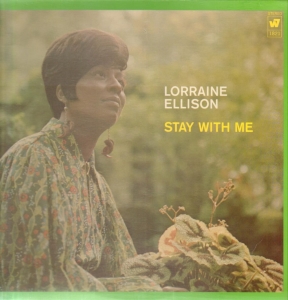 What else did we listen to? Donny Hathaway, “Jealous Guy” (1972); that was awfully good. (pauses) I mean, just a ton of stuff. “Stay With Me (Baby),” Lorraine Ellison (1966) — that was just a huge 45 that had a huge orchestra. [It was a 46-piece orchestra from a canceled Sinatra session; the track was produced by Jerry Ragavoy and engineered by one of Linda’s future producers, Phil Ramone.] It was made to be a 45, and had a sort of 45 kind of mix. It was just an amazing piece of material. Oh my God, what an amazing record that was. Those are just what I remember off the top of my head, but I listened to everything, obviously. But the hi-fi, I really miss a lot.
What else did we listen to? Donny Hathaway, “Jealous Guy” (1972); that was awfully good. (pauses) I mean, just a ton of stuff. “Stay With Me (Baby),” Lorraine Ellison (1966) — that was just a huge 45 that had a huge orchestra. [It was a 46-piece orchestra from a canceled Sinatra session; the track was produced by Jerry Ragavoy and engineered by one of Linda’s future producers, Phil Ramone.] It was made to be a 45, and had a sort of 45 kind of mix. It was just an amazing piece of material. Oh my God, what an amazing record that was. Those are just what I remember off the top of my head, but I listened to everything, obviously. But the hi-fi, I really miss a lot.
Mettler: I can’t blame you. I do like that the three songs with Ann Savoy kick off Duets, because I think you set a nice tone that way.
Ronstadt: Well, you know, they were genuine duets. At the end of things, it’s hard to find true duets — duets where people are participating equally. But with Ann, it was that, truly — on “Adieu False Heart,” and also “Walk Away Renee,” where we traded off singing, where Ann sang the lead verse on the end. I felt that was a true exploration of what our two voices did. In the living room, in our pajamas. (laughs heartily) That was how we sang together — sisters who were united through our love of those truly great, truthful songs.
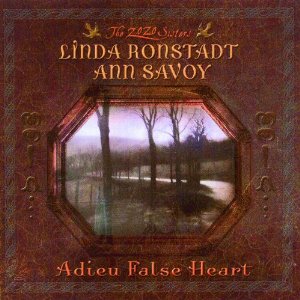 Mettler: How did you make the choice of who sings what line in “Renee”?
Mettler: How did you make the choice of who sings what line in “Renee”?
Ronstadt: It’s surprisingly obvious how it is, when you get down to it. “That one should sing that, and that one should sing this.” We always go for what sounds best, and we always know what sounds best.
And even with the Trio [with Dolly Parton and Emmylou Harris], there was no competition for who got to sing lead. It was more like one of us trying to get the other one to sing it, you know. Dolly would be trying to get me to sing something (laughs), and I’d be trying to get them to sing something.
Mettler: It was good democracy, you could say.
Ronstadt: We were united for the best sound we could get, and that was it. That was what we were chasing.
Mettler: As to other great artists, I know you love Jackson Browne and Tom Petty.
Ronstadt: Oh, those are my favorites. I love Tom Petty. The Heartbreakers is, bar nothing, my favorite rock & roll band. They came along later and absorbed all the influences of everybody else, so it’s like you get everybody: You get The Rolling Stones, you get The Byrds, you get Bob Dylan, you get Jackson Browne. You get everybody when you get Tom Petty. I love him as a singer.
And he makes the best-sounding records. He mixes them before he records them. They figure out the arrangements, so their mix is really in their arrangements so much, they don’t get in the way of their arrangements when they record it.
Mettler: I went out to Southern California to interview Tom when they were working on the Mojo record a few years ago [in 2010]. They essentially cut everything live in their rehearsal space. They do it all together, and their producer/engineer, Ryan Ulyate, is so good at capturing exactly how they sound.
Ronstadt: Oh man, they’re a great band. I love those guys.
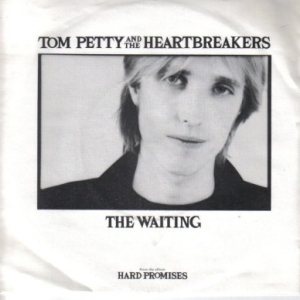 Mettler: You had a pretty great analysis of “The Waiting” in Simple Dreams [page 25], because you were talking about how you analyze singers to find where their influences come through, and how you figured out where he was coming from.
Mettler: You had a pretty great analysis of “The Waiting” in Simple Dreams [page 25], because you were talking about how you analyze singers to find where their influences come through, and how you figured out where he was coming from.
Ronstadt: That song was just an intricate musical journey. I just kept going, “Oh, you got that from Mick Jagger.” “Oh, you got that from Bob Dylan.” “Oh, you got that from The Beatles.” “Oh, there’s some Jackson Browne.” He got a lot of that stuff from Roger McGuinn — those hard r’s. (Sings:) “The waaaaaiting is the harrrrrdest part…” That’s Roger McGuinn, a California accent coming from Brian Wilson. (chuckles)
Mettler: You don’t hear anyone sing like Tom. Even the way he sings a word like “me” and how he wraps into that syllable.
Ronstadt: Yeah, or “you.” (Sings:) “I want to get to yaaouuuuuuu.” (laughs) Have you ever listened to his song “Southern Accents” (1985)? God, what a beautiful song that is. What a great song that is, so beautifully done.
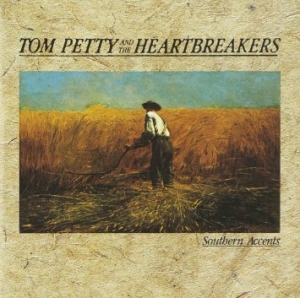 Mettler: Would you add that one to your “Songs I Didn’t Sing” list that was in your book?
Mettler: Would you add that one to your “Songs I Didn’t Sing” list that was in your book?
Ronstadt: No, because I’m not from the South. But I see what he’s saying exactly. I love that line about “there’s a dream I keep having where my mama comes to me/And kneels down over by the window and says a prayer for me.” It set a beautiful portrait of somebody just living there at the lower bottom, or maybe the upper bottom. A working stiff just getting through. Not special, never got any breaks. And he’s just himself, and he defines himself by his region. I just thought it was the most touching, completely non-patronizing, unflinching portrait of a kind of a poor working-class American. He’s a Southern guy, you know? “That drunk tank in Atlanta’s just a motel room to me.” Bloody hell, that’s fabulous. “Think I might go work Orlando/If them orange groves don’t freeze.” It’s just so great. Like being an itinerant worker.
Mettler: And like you said, that band, The Heartbreakers, are so great. Mike Campbell, Benmont Tench —
Ronstadt: He’s such a great keyboard player! And I’ve worked with Mike [on We Ran, in 1998]. He’s just an incredible guitar player. I just love him and his playing.
Mettler: Mike should get more recognition. He’s in that underrated camp for some reason, but he shouldn’t be.
Ronstadt: All the musicians know. And ultimately, who cares, when you’re up there playing that beautiful, elegant stuff that he plays. He just needs that, to be able to play it. I’d love to trade places with him any day of the week. (laughs) I would totally do that. What a real master he is.
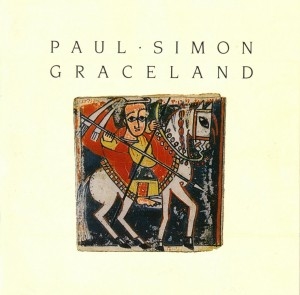 Mettler: One song that probably wasn’t available for you to use here — and is it even technically a duet? — is “Under African Skies,” with Paul Simon, on Graceland (1986).
Mettler: One song that probably wasn’t available for you to use here — and is it even technically a duet? — is “Under African Skies,” with Paul Simon, on Graceland (1986).
Ronstadt: Well, not really. If it had been on one of my records, I would have counted it as such, and I would have included it. I was incredibly proud that I got to even stand in the same room while he was recording. I do consider him one of the truly great masters of recording. I just think he’s incredible. I think that recent record of his, So Beautiful or So What (2011), is a masterpiece. It sounds to me like every single thing he ever learned and thought about recording went into making that record and just getting incredibly exquisite sound — not too much, not too little. In fact, I would have called that record Not Too Much, Not Too Little. (laughs) He used just exactly the right amount of echo, and got an incredible sound on his voice. And he sings like a banshee — like a banshee truly, because he sings so much about death; an unflinching look at death.
I admire that record. It took a lot of guts to do that record. And I love the title. It’s just shattering. Every time I do listen to it, I listen to it really carefully all the way through and go, “Oh my God, that’s really something.” (chuckles)
Mettler: I like that there’s a group of songwriters who haven’t stopped creating. They continue to push boundaries even this far into their careers.
Ronstadt: He’s riding at the top of his talent! There are only a few people who are doing that. Leonard Cohen is doing that, Paul Simon is, Neil Young. Neil knows exactly what he wants to do while he’s experimenting with stuff. He has certain things in mind. Oh gosh, his stuff is soooo good! So good. I love the way he mixes. I like the way he thinks about sound. He’s so good.
Mettler: Tell me more about your performance on “Under African Skies,” which, I have to say, is one of my favorites of your performances on someone else’s record.
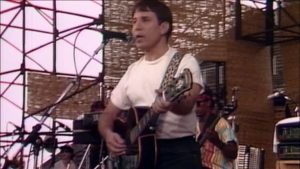 Ronstadt: Paul called me up one day and said, “I’m having a hard time on this work; I’m stuck. Give me an idea, something I can see.” I happened to be in Tucson when he called. “Give me something you saw or thought of when you were growing up.” Immediately, I thought of visiting the San Xavier del Bac Mission, where we used to spend a lot of time. It was built in the 1600s, just south of Tucson, founded by Father Kino. [San Xavier was founded as a Catholic mission by Father Eusebio Kino in 1692.] It’s just meant to be one of the most beautiful missions in North America. Just gorgeous. It was built on a sacred spot, one of the Indians’ sacred mountains. So it feels like a holy spot, regardless of what religion you subscribe to, or even if you’re like me and don’t subscribe to any religion. It feels like a really resident, amazing place. So I told Paul about that, and he put that in there, and then we all sang harmonies all the time when I was a kid growing up. The whole family sang. We all sang in harmony, everybody knew how to sing harmony. So that’s how he wound up with those lyrics.
Ronstadt: Paul called me up one day and said, “I’m having a hard time on this work; I’m stuck. Give me an idea, something I can see.” I happened to be in Tucson when he called. “Give me something you saw or thought of when you were growing up.” Immediately, I thought of visiting the San Xavier del Bac Mission, where we used to spend a lot of time. It was built in the 1600s, just south of Tucson, founded by Father Kino. [San Xavier was founded as a Catholic mission by Father Eusebio Kino in 1692.] It’s just meant to be one of the most beautiful missions in North America. Just gorgeous. It was built on a sacred spot, one of the Indians’ sacred mountains. So it feels like a holy spot, regardless of what religion you subscribe to, or even if you’re like me and don’t subscribe to any religion. It feels like a really resident, amazing place. So I told Paul about that, and he put that in there, and then we all sang harmonies all the time when I was a kid growing up. The whole family sang. We all sang in harmony, everybody knew how to sing harmony. So that’s how he wound up with those lyrics.
Mettler: How great that you grew up in a house where everybody sang all the time: your folks, your grandparents —
Ronstadt: Yeah, we did! And we didn’t do it because we wanted to get onstage; we sang it because we wanted to sing. (laughs) That’s probably the best reason to do it! And that’s what we did!
Mettler: And then you got out the 78s, and —
Ronstadt: Yeah, and they sounded great! 78 monarual; sounded pretty good! (laughs heartily)
Mettler: Tell me about working all those years with Peter Asher. You guys got amazingly in sync. [Peter Asher produced most of Linda’s recorded output in the ’70s and ’80s.]
Ronstadt: Peter is a very, very highly skilled producer. People don’t really know what a producer does, a lot of the time — including me, when I first started working with him. Often I didn’t even know what he was achieving, right in front of my face. But a lot of it is knowing what’s going to fit later on, so that you’re constructing the right kind of foundation for what you’re going to add later — you’re troubleshooting. He’s incredibly good at that. He was able to sort out arrangement ideas without imposing his ideas on it by letting the musicians, the artists in our case, be the ones who evolved those arrangement ideas. And Peter prevented things from degenerating into a muddle, which they could do pretty fast if he wasn’t around. It’s a subtle thing, just to listen and make thoughtful corrections, or no corrections at all, as often might be the case. And he knew the difference.
Mettler: And how nice that, in the ’80s, you were able to transition to your personal passion for doing standards.
Ronstadt: Peter had never even listened to a lot of that stuff! He started listening, and then realized what kind of quality there were in the songs.
Mettler: You make a great point. There was this incredible standard of songwriting at the beginning of the 20th century that needed to be revisited.
Ronstadt: It was so ridiculous. Everybody wanted to posture — that rock & roll posture. They thought it was cool because it was sort of off-putting and it gave you power, and gave you big face. They really wanted to jump on all that, and it was so silly. There were so many different things you could do.
I mean, what do you do with a guy like Paul Simon if only hard rock & roll, like The Rolling Stones, is the definition of what’s “right”? What are you gonna do with a guy like Jimmy Webb, or Leonard Cohen, or Randy Newman? Are they just supposed to stand by the side and hum their tunes to themselves? It’s just ridiculous.
Mettler: If Randy Newman wants to sit at a piano for 2 hours and play songs like “Sail Away,” why not?
Ronstadt: It’s all influenced by rock & roll. Look at that guy from New Orleans, Fats Domino — you can certainly hear it in his voice. He certainly knows how to play rock & roll, from the fundamentals on out. But he’s clearly done something else with it.
Or you have somebody like The McGarrigle Sisters. Where are you going to put them? I hate that kind of thing where pop music has to be defined by x, y, and z. It should be a free-for-all in there.
Mettler: Artists should do what they want to do. And whatever you, the artist, decided to do is what I, the listener, should be interested in hearing.
Ronstadt: It’s on them, the artists, to make you want to listen. They have to do it, they have to do something that demands that you listen. If they don’t, then they’re shit out of luck! (chuckles) They’ll have to go live in the closet. But if they do, then they’re entitled to it, regardless of what their style is.
Mettler: Didn’t somebody say that in a book of hers…?
Ronstadt: Art is there to help you process your feelings, to help you transcend moments that are too unbearable to deal with.
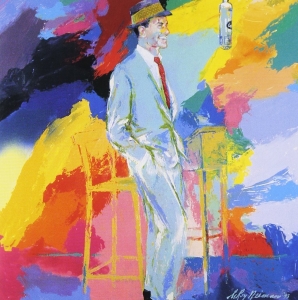 Mettler: For your duet with Frank Sinatra, “Moonlight in Vermont” [originally released on his Duets II album in 1994], you and Frank didn’t actually sing together in the same room, right?
Mettler: For your duet with Frank Sinatra, “Moonlight in Vermont” [originally released on his Duets II album in 1994], you and Frank didn’t actually sing together in the same room, right?
Ronstadt: They sent me a track with his vocal on it, so that I could put on the harmony and sing some solo parts myself. He was having a lot of trouble with his voice by then — he was older, but I knew his voice really well and had great respect for it. As Rosemary Clooney would say, “He was still dangerous. There’s still plenty of story there, and there’s plenty of color and texture to work with.”
What I really wanted to do was to set up a sound halo around him so that I could complement what I thought were the little pieces that were missing; the little holes in his voice here and there. And try to deal with where his pitch had settled, because he was a guy who had incredibly good pitch his entire life, and it was mostly still there. But there were some places where his voice had gotten weak and the pitching wayward, and there wasn’t any way to correct it electronically without turning it into something robot-sounding, so I just had to learn to dial up that pitch myself and roll with it so that it wouldn’t sound out of tune. That was hard, and took a lot of finesse. I had to do a lot of ad-libbing around him.
Mettler: Right, those were the only “ooh-oohs” I remember hearing from you on the entire Duets record.
Ronstadt: I remember [conductor/composer] Nelson Riddle telling me his job was to support the singer and flesh out the stuff that might be lacking and support the strong stuff that was there, but not ever get in the way of it. And that’s how I felt about that vocal.
Mettler: Had you ever met Frank Sinatra in person?
Ronstadt: I’m trying to remember if I ever met him — I don’t think I did. I got a letter from his producer [Phil Ramone] that when he got the tracks the two of us did, he was outside of his house, and he put it on the system he had there that went inside and outside and all over the house, and he put it on repeat and played it all day. He really liked it. Mind you, he was walking around back and forth. (laughs) But his producer told me he really, really liked it, and that’s what he did.
Mettler: The previously unreleased track on Duets, “Pretty Bird,” is just you and Laurie Lewis singing together. Where did you unearth that one?
Ronstadt: It was originally intended to be a tribute record to Hazel Dickens [a bluegrass singer who died in 2011], which was a project that never got off the ground, but in the meantime, Laurie and I had recorded that. And it was just languishing. I remembered that we had done it and I asked Laurie if she could get it back, and she did. I love the song. I think the song is just beautiful. Laurie found it. I love her; she’s just a wonderful person. A good musician.
Mettler: Do you feel comfortable with the overall scope of the Duets collection, as in, “Hey, this is me” and not just, “Well, I’ve got to do these certain things for the times”?
Ronstadt: Well, I think it’s an evolution, following a bit of the journey I went on. (laughs) I don’t know where it started and where it ended, but – for instance, the song I did with James Ingram [“Somewhere Out There,” from An American Tail, 1986] was never on any of my records. It wasn’t exactly my style in terms of recording and its approach, but I thought the song was nice and he sang so beautifully. I loved singing with him.
Mettler: And also having “Sisters” with Bette Midler under the same roof —
Ronstadt: I loved having “Sisters” [from Bette Midler Sings the Rosemary Clooney Sony Songbook, 2003]. I loved singing with Bette Midler, I loved it! I loved that song. I’m such a huge fan of Rosemary Clooney. I was a good friend of hers and I loved being able to do it. I love my sisters, and we used to sing that song together.
And Bette is such a good interpreter. She really is a good singer, especially for stuff like that. Her voice really shines on standards, I think.
Mettler: The “uh huh!” moment you guys had there was one of my favorites.
Ronstadt: (squeals) Oh, I love that! (chuckles) She’s got such a wicked little sound in her — a wicked little twinkle in her eyes, and a wicked little twinkle in her notes, too.
Mettler: Since there was a Duets II for Mr. Sinatra that you were a part of, I think you may have to do a Duets II yourself. It’s only fair.
Ronstadt: It depends on the record companies. I don’t have any power to put out stuff like that on my own — I don’t think. Maybe I do.
Mettler: Yeah you do! Sure you do!
Ronstadt: Maybe I do. (laughs) I never think of it. I never listen to the records once I’m finished with them — but I remember moments that I really like. I should look, maybe. I doubt there’d be a market for it, but who knows…
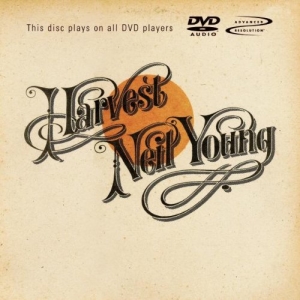 Mettler: What can you tell me about working with Neil Young and James Taylor on Harvest (1972), on the songs “Heart of Gold” and “Old Man”? What made that so special?
Mettler: What can you tell me about working with Neil Young and James Taylor on Harvest (1972), on the songs “Heart of Gold” and “Old Man”? What made that so special?
Ronstadt: It was just a long, long, long, long night, but it didn’t matter how tired you got — there was no discomfort, even though I was exhausted. And there was no pain in my knees, even though I had been kneeling with them on the floor for hours at a time. My voice was just ragged, just shredded, but I didn’t care. It was just pure joy to do that song.
James had come into the studio [Quadrafonic Studios in Nashville, in 1971] and there was this banjo with six strings on it, tuned like a guitar. He picked it up and started fooling around with it. I don’t know who it belonged to; it might have belonged to Elliot Roberts [Neil’s manager]. And that’s how “Old Man” wound up with that banjo sound, though it was really a guitar. But I liked the kind of sound it settled into. And Kenny Buttrey was playing the drums, I remember. [The Harvest band was known as the Stray Gators.]
Who else was there — well, I remember there was this beautiful snowstorm afterward. We just did it over and over and it took a looooooong time to do those two tracks. But we didn’t start until around midnight. We’d already worked all day long on the TV show [The Johnny Cash Show, recorded at the Ryman Auditorium]. I mean, why people thought they could go and record after a long day doing a TV show, I don’t know. But it never occurred to us that we couldn’t. We were young and we were in the groove, so we kept playing! (laughs)
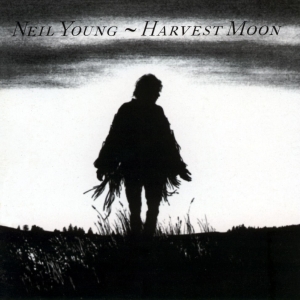 Mettler: And now you have an indelible record — and a pretty nice sequel, Harvest Moon (1992), as well.
Mettler: And now you have an indelible record — and a pretty nice sequel, Harvest Moon (1992), as well.
Ronstadt: It was so fun to record that! Nicolette Larson — I had Nicky on that, right! [They both sang backing vocals together on “War of Man.”] I loved singing with her, we had so much fun. We spent more time giggling and laughing than singing. We had so much fun.
Mettler: And you got “Lotta Love” going for her, isn’t that right?
Ronstadt: Yeah, I suggested that. Neil had sent it to me on a tape of a bunch of songs of his, and I said to her, “Oh, you should sing this.” That was a hit for her. [Nicolette’s Larson’s version of Neil Young’s “Lotta Love” reached #8 on Billboard’s Hot 100 singles chart in February 1979.]
And I introduced them, too. Nicky and Neil were an item for a while; they were very cute together. She was madly in love with him.
Mettler: Ah, so it’s all you…
Ronstadt: Well, not all me! (laughs) I think Nicky and Neil had something to do with it. They were great together. And Nicky and Neil sounded real wonderful together when they sang, I thought. A really good blend.
Mettler: You’re not singing anymore; you’re retired, as you’ve said. Any songs that got away, any songs you would have liked to have done?
Ronstadt: Oh, you know… there are a lot of them. (chuckles) “Accidentally Like a Martyr,” by Warren Zevon, that’s the one I’ve been thinking about lately. I wish… (sings:) “tell my sister, tell my mother,”… “Tell My Sister,” a McGarrigle Sisters song. There are a lot of McGarrigle Sisters songs.
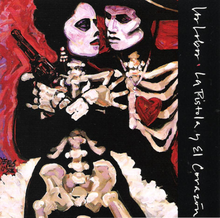 God, there are so many Mexican songs I wish I had done. And I wish I had been able to have recorded a duet album with David Hidalgo [of Los Lobos]. I love his singing, I love his songs. I wore out La Pistola y El Corazon (1988). And I did finally get to sing it with him. We did get to sing it together one night [at a benefit for the Los Cenzontles Mexican Arts Center in the San Francisco East Bay, 2008]. He said, “Let’s make a record together!” But my voice was gone by then. I couldn’t sing anymore.
God, there are so many Mexican songs I wish I had done. And I wish I had been able to have recorded a duet album with David Hidalgo [of Los Lobos]. I love his singing, I love his songs. I wore out La Pistola y El Corazon (1988). And I did finally get to sing it with him. We did get to sing it together one night [at a benefit for the Los Cenzontles Mexican Arts Center in the San Francisco East Bay, 2008]. He said, “Let’s make a record together!” But my voice was gone by then. I couldn’t sing anymore.
Mettler: Does it feel any different now?
Ronstadt: No, there’s no signal from the brain to the muscle at this point. It’s a movement disorder. And it requires incredibly precise, complex movements to sing. There’s the number of vibrations per second you have to have to sing going up and down your vocal chords, and how you have to be able to turn the muscles so you have different planes you have to reflect off of. It’s impossible to do it when you have Parkinson’s Disease.
Mettler: Is that frustrating for you? Are you OK with it?
Ronstadt: Yeah, I’m fine with it. It’s only something I’ve been dealing with for the past number of years or so. There’s nothing I can do for it. Laurie Lewis came over to my house with three girls who could really sing — very talented, really original songs, wonderful harmonies. They sang a capella in my living room all afternoon. I was dying to sing with them (laughs), but I loved hearing them!
Mettler: It’s great you’re in such good spirits about it. Some people might feel a different way.
Ronstadt: Well, I’m not in good spirits; it’s just that I don’t have any other choice. I mean, you can’t drag around about something that’s inevitable. If you lose an arm, do you just stop? You use the other arm, because you have one. (laughs) Or you have somebody else do it for you.
Mettler: I think you can be the “accidental producer,” as you called it, or something like that…
Ronstadt: Well, I don’t know the market now, it’s so — I find it extremely moving, the music business. The things that I love, like the music that comes out of Northern Mexico, the norteno-corridos. I don’t like the drug business (laughs), but that’s what I listen to. When I listen to the radio, I put on the Mexican station.
Mettler: The music business seems to be comprised of compartmentalized niches across the board now. There’s really no mass market, per se, but I don’t know if that’s good or bad. But it’s like you were saying — the artist will put out what they’re going to put out, and the audience will find it. Whether it’s as big as it was in the ’70s, is irrelevant.
Ronstadt: Yeah, and there’s stuff that’s out there that’s on YouTube and the Internet. I found this group called the Comedian Harmonists, this German group from before World War II [circa the 1930s], four- and five-part harmonies, just absolutely brilliant. Brilliant craftsmen and incredibly good singers, incredibly good composers, just some of the best music groups I’d ever heard. I listened to them nonstop for a year. Then Carlo Gesualdo, the [Italian] madrigal composer from the 1600s. So many things you can find. Lately, I’ve been listening to Estrella Morente, the flamenco singer from Spain. One of the best singers I’ve ever heard from anywhere. She’s a huge star in Spain, but she’s not really that big here. Her voice is absolutely gorgeous.
Mettler: I guess that’s the one beauty of things being so readily available to us now as opposed to when we were growing up and could really only pick and choose what we could hear.
Ronstadt: Yeah. And there’s nobody sort of sorting things out for you, saying, “Here!” — unless you want to count things like Pandora, which I really don’t want to. I think it’s subversive for music. There’s nobody sorting things out. I’ve tried. I mean, I love pop music, but I’ve heard it… and I’ve heard it, you know? I’m looking for other things. I’m looking for the source of it all more than I am for pop music. I’m a ballad singer. I like to sing ballads. (chuckles) Ballads with a broader philosophical view — that’s what I like.
Mettler: Finally, how important is sound quality to you as both artist and listener?
Ronstadt: Oh, it’s essential. It’s essential. For instance, with my voice, there’s a certain frequency range that carries a story. That has the vocal detail, and the little grind at the top of your voice with the shifting textures and colors. And when you can’t hear that, you lose the story. It’s essential to have what the artist originally intended to have on the recording, because that’s how they’re trying to tell the story.
The recording process itself is the other artist in the room. The board is an instrument, and mixing is an artist, another musician. Without it, you edit the story almost to the point where it’s nonexistent.
Tags: 5.1, Adieu False Heart, Ann Savoy, Bette Midler, Blu-ray, CD, Comedian Harmonists, Cry Like a Rainstorm Howl Like the Wind, David Hidalgo, Dolly Parton, Duets, Duets II, Emmylou Harris, Estrella Morente, Feels Like Home, Frank Sinatra, Gary Paczosa, George Massenburg, Graceland, Harvest, Harvest Moon, Hazel Dickens, Heart of Gold, hi-res, Hummin to Myself, Jackson Browne, James Ingram, James Taylor, JBL, JD Souther, Kenny Buttrey, La Pistola y El Corazon, Laurie Lewis, Linda Ronstadt, Los Lobos, Lotta Love, LP, McGarrigle Sisters, Mike Campbell, Moonlight in Vermont, Neil Young, Nelson Riddle, Nicolette Larson, Old Man, Paul Simon, Peter Asher, Phil Ramone, Pretty Bird, Rosemary Clooney, Simple Dreams, Sisters, Skywalker Ranch, Somewhere Out There, Stray Gators, The Heartbreakers, The Waiting, Tom Petty, Under African Skies, vinyl, War of Man, Warren Zevon, We Ran, What's New, Winter Light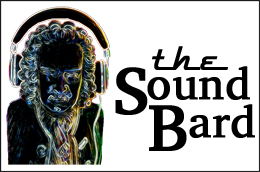
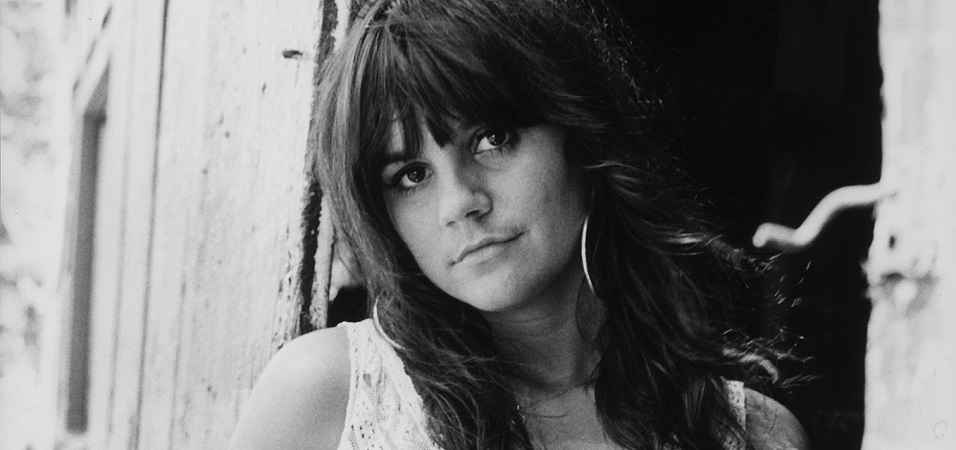
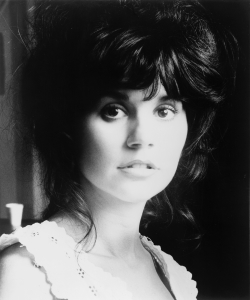
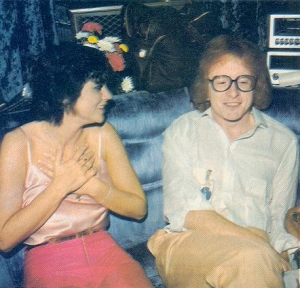
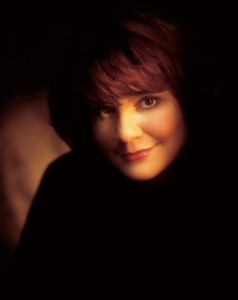

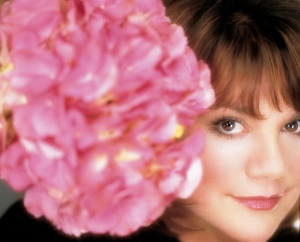
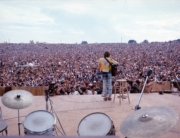
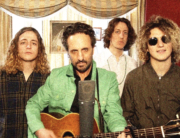
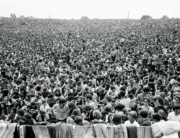
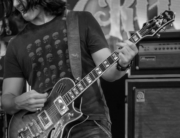
Great story! We love you Ms. Ronstadt!!
fantastic story, Linda is so knowledgeable – I am so sad that she can’t sing any longer…..
Thanks Linda for sharing your expertise and experiences. a great read!!!!! eddiejinnj
The wisdom of experience: Ronstadt has it in spades.
And there will never be another voice like hers, another voice with that thrilling, moving color.
The great tragedy for me, the great loss to my musical enjoyment, is that she still has the muscle, she still has the voice, she just can’t access it. That is some existential cruelty right there, man.
But she can talk! And is there anyone else who knows so much about music? Thanks for this wonderful interview.